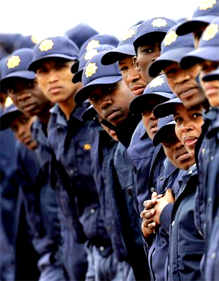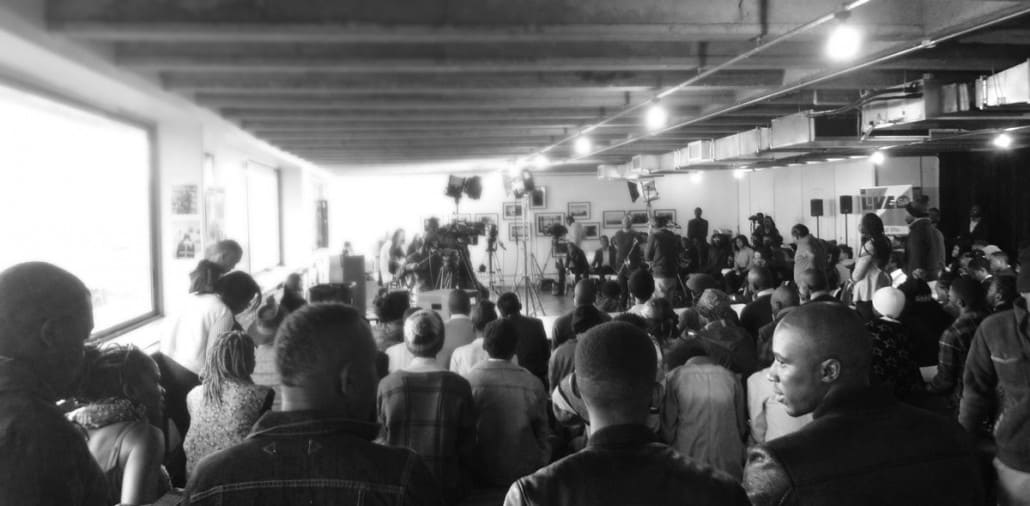
The Global Corruption Barometer, released by Transparency International (TI) in July, revealed that South Africans viewed the police service as the most corrupt institution in the country. A staggering 83 percent of respondents had this perception of the police, and of the 74 percent of respondents who came into contact with a police official in the past year, 36 percent had paid a bribe.
While Lieutenant-General Solomon Makgale of the South African Police Service (SAPS) pointed out the flaws in the survey, its results echoed a similar study conducted in 2011 by the Human Sciences Research Council (HSRC); bribery and corruption were endemic in the SAPS. It has been reported that in the year June 2012 to June 2013, 525 police officers were dismissed for crimes that included corruption and fraud. The focus in this article is primarily on the SAPS and the prevalence of corruption in this national key entity.
The public’s perceptions
According to the barometer, South Africans are not alone in thinking that our police service is the most corrupt institution in the country; we are among 35 other nationalities who share a similar belief about their law enforcement units. In Sub-Saharan Africa, 16 out of 20 countries highlighted the police service as highly corrupt and an average of 61 percent of people was asked to pay a bribe by a police official.
In 2011, a study of perceptions of corruption in South Africa undertaken by the HSRC found that two-thirds of South Africans believed the most corrupt public officials were in the national police service. Ironically, the study also illustrated that most South Africans saw the SAPS as the most trusted institution to resolve their experiences of corruption.
Complaints from the public
Based on the complaints received by Corruption Watch, it is clear why the public perceptions of the SAPS are so low. Between January 2012 and July 2013, CW received 79 complaints about the SAPS. Geographically, most of these complaints came from Gauteng, which accounted for 71 percent of the reports. Of these, 63 percent of the corruption incidents were reported to have taken place in a metropolitan area, while 25 percent originated from small towns.
The types of corruption reported to CW regarding the SAPS included:
- Bribery – 57%;
- Abuse of government resources – 20%;
- Corruption in employment/hiring – 8.8%;
- Corruption in procurement – 2.5%; and,
- Ghost workers – 1.3%.
Our data also pointed out that police officers made use of intimidation to solicit bribes and were willing to accept bribes to make charges or dockets “disappear” or to turn a blind eye to illegal activities.
SAPS refutes TI results
In his response to the TI results, Makgale claimed that the survey overlooked three key factors. Firstly, only 1 000 respondents from urban areas were sampled; Makgale doubted that this group was large enough to gain a clear representation of the population’s overall perceptions. Secondly, he noted that there was no clear differentiation between the different police services in the country; and lastly, the lieutenant-general pointed out that corruption was a two-way relationship: “It takes two to make a corrupt transaction, the corrupter and the corrupted,” he said.
The difference between SAPS and MPS
The TI barometer grouped the SAPS and metropolitan police services (MPS) under the umbrella of police services. However, it is important to note that these are separate entities with different mandates. The SAPS was formed in 1994 by amalgamating the South African Police and the police forces of the former homelands. The role of the SAPS is to ensure: safety and security of all persons and property in South Africa, co-operation between SAPS officials and the communities they serve in combatting crime, and effective civilian supervision over the police. The SAPS is also responsible for upholding and safeguarding the fundamental rights of every person as outlined in Chapter Three of the Constitution.
In 1998, the municipal and metropolitan council police forces, brought under the auspices of the South African Police Act, collectively became known as the Municipal/Metropolitan Police Service. The MPS is mandated to enforce traffic laws and municipal by-laws.
Causes of SAPS corruption
Andrew Faull from the Institute for Security Studies wrote a paper on corruption in the SAPS in which he listed causes of corruption in the institution. Faull noted that the causes included: low managerial and public visibility of frontline members, day-to-day stresses of the job, peer group secrecy, and a mandate to engage with criminality on a daily basis.
According to Faull, in South Africa police corruption is based on one of three themes: the “rotten apple” theory, salary levels, and the “corrupting public”. The rotten apple theory argues that the actions of a small number of individuals tarnish the reputation of an entire organisation; however Faull noted that some studies suggested SAPS corruption was widespread and widely acknowledged within the organisation, but seldom acted upon. Regarding salary levels, studies have found that members of the public and the SAPS made frequent reference to low salary levels as the cause of police corruption. Faull disagreed with this reason, noting that police earned considerably higher salaries, in addition to receiving extra benefits, compared to other public servants such as fire fighters, nurses and teachers.
The “corrupting public” is another common theme in South Africa, in which the public make the police corrupt. Faull said this argument was dangerous, and that while the public engaged in criminal acts of bribery, and therefore should be labelled as criminals, the onus was still on the SAPS to be a pillar of integrity.
“While not without their merits, all three discourses oversimplify matters and reduce corruption to material gain and interactions between the public and the police. They also provide the police with a means to justify corrupt behaviour and assume a victim position in a debate,” Faull pointed out.
In her dissertation on corruption in the public sector, criminologist Dr Elisabeth Grobler noted that there were four pertinent areas on which there needed to be a focus in order to reduce police corruption. These were: recruitment, reducing opportunities for corruption, detection and deterrence of corruption, and reinforcing the motivation to do what was morally correct.
SAPS anti-corruption unit
A few days after the TI results were released, the SAPS launched an anti-corruption unit to fight corruption and fraud in its ranks. On 11 July, national police commissioner General Riah Phiyega said: “If we are to successfully fight crime in the country, we must first get our house in order. We will therefore not shy away from taking action against our own.”

